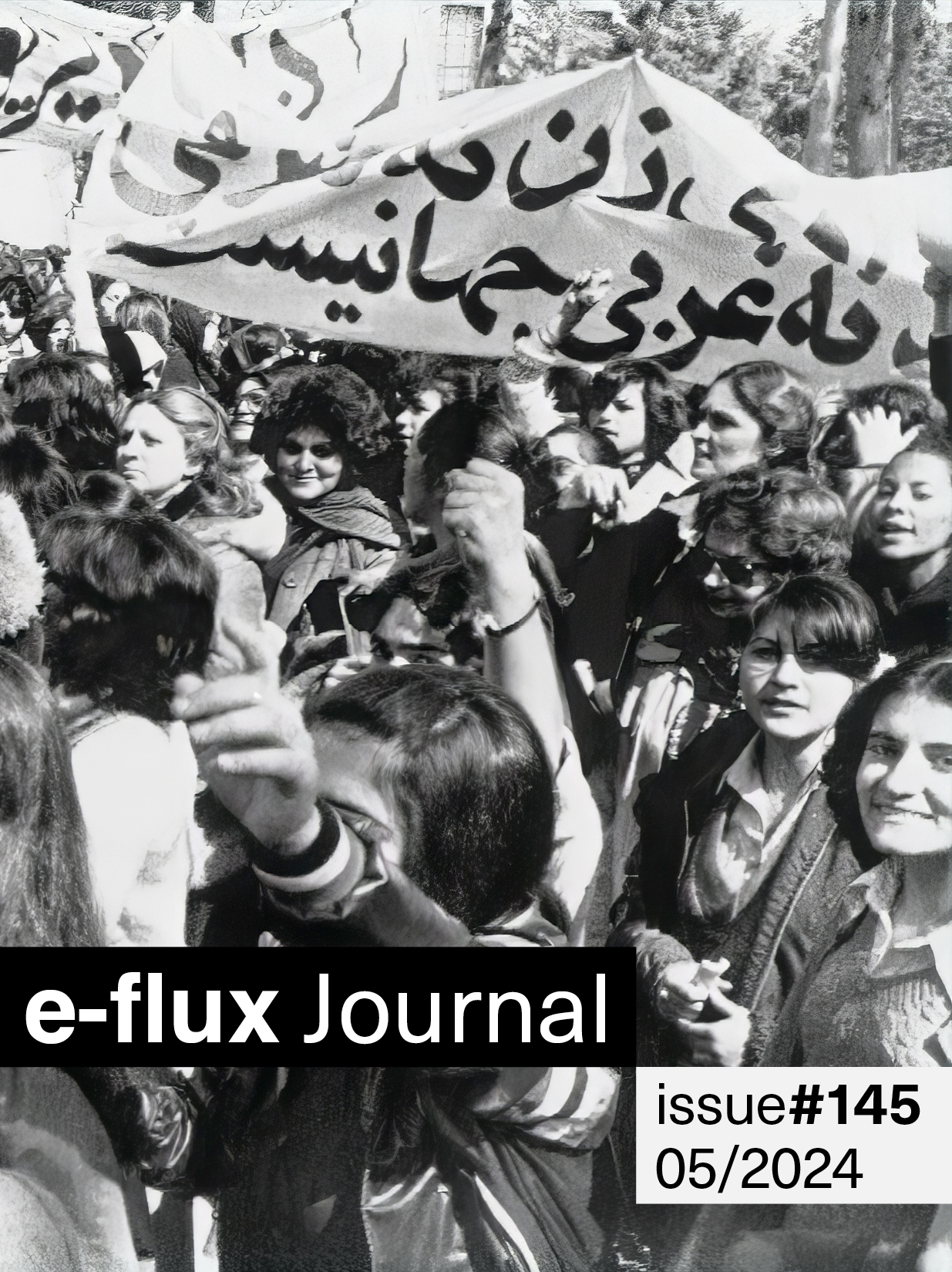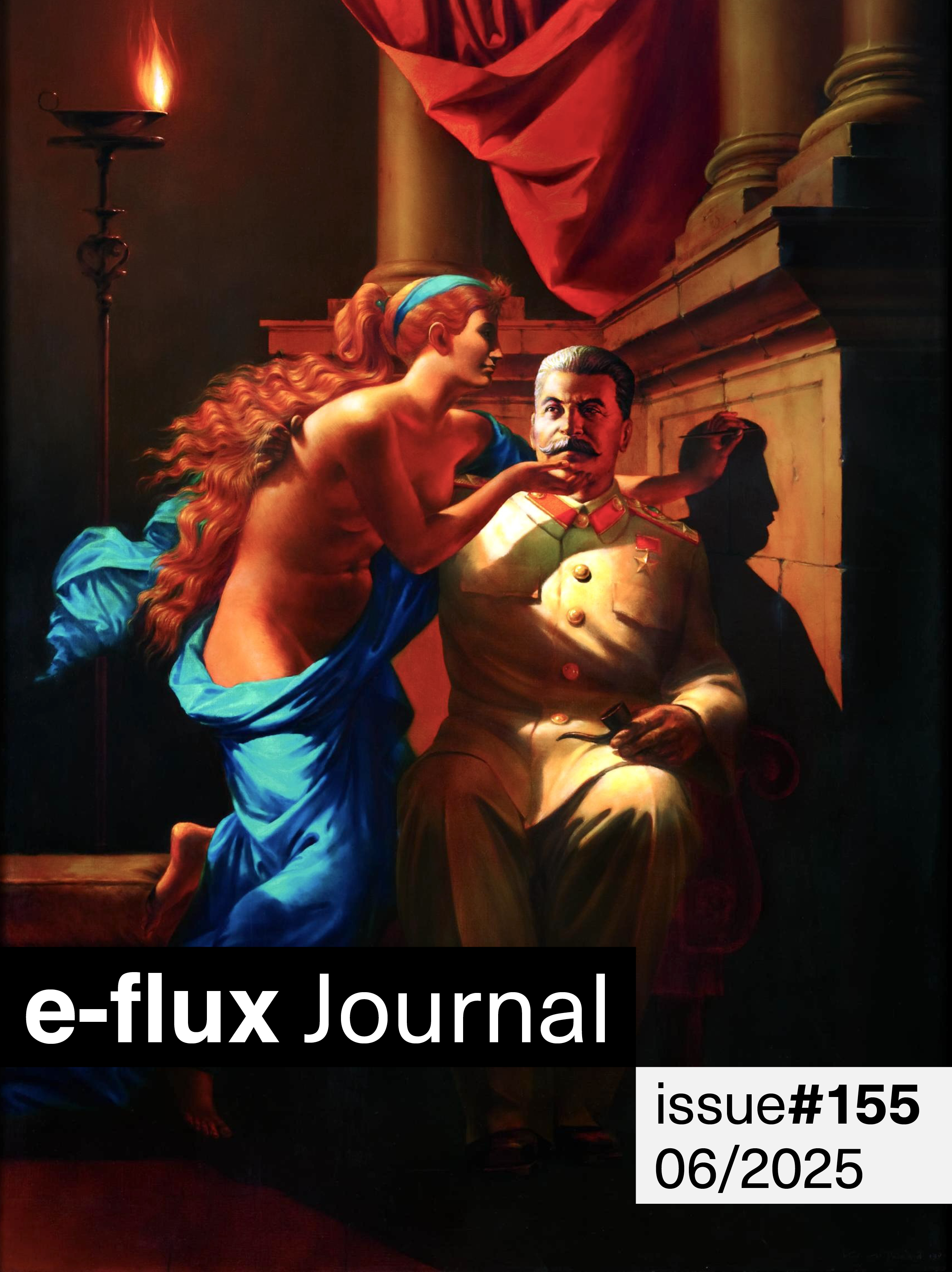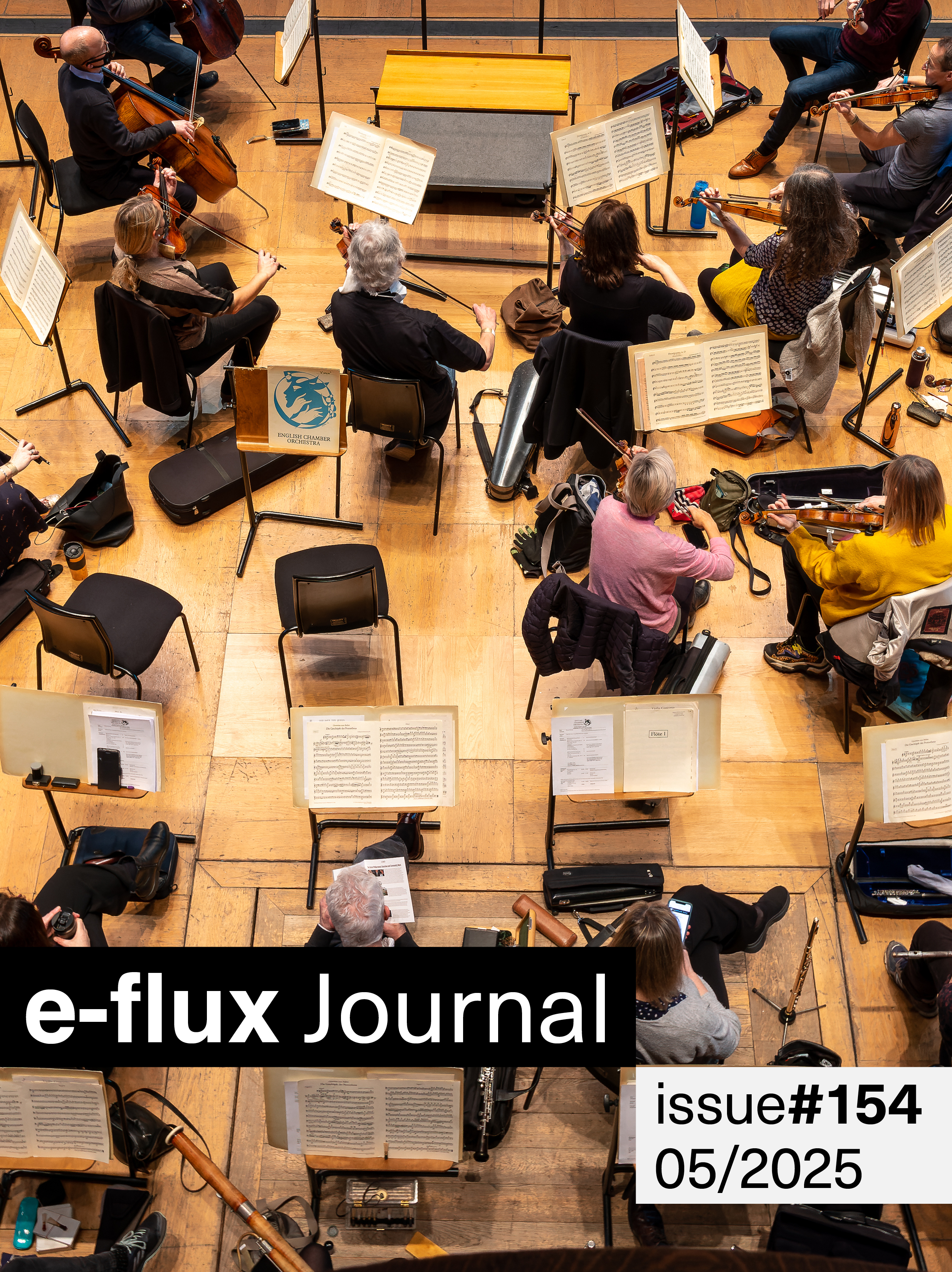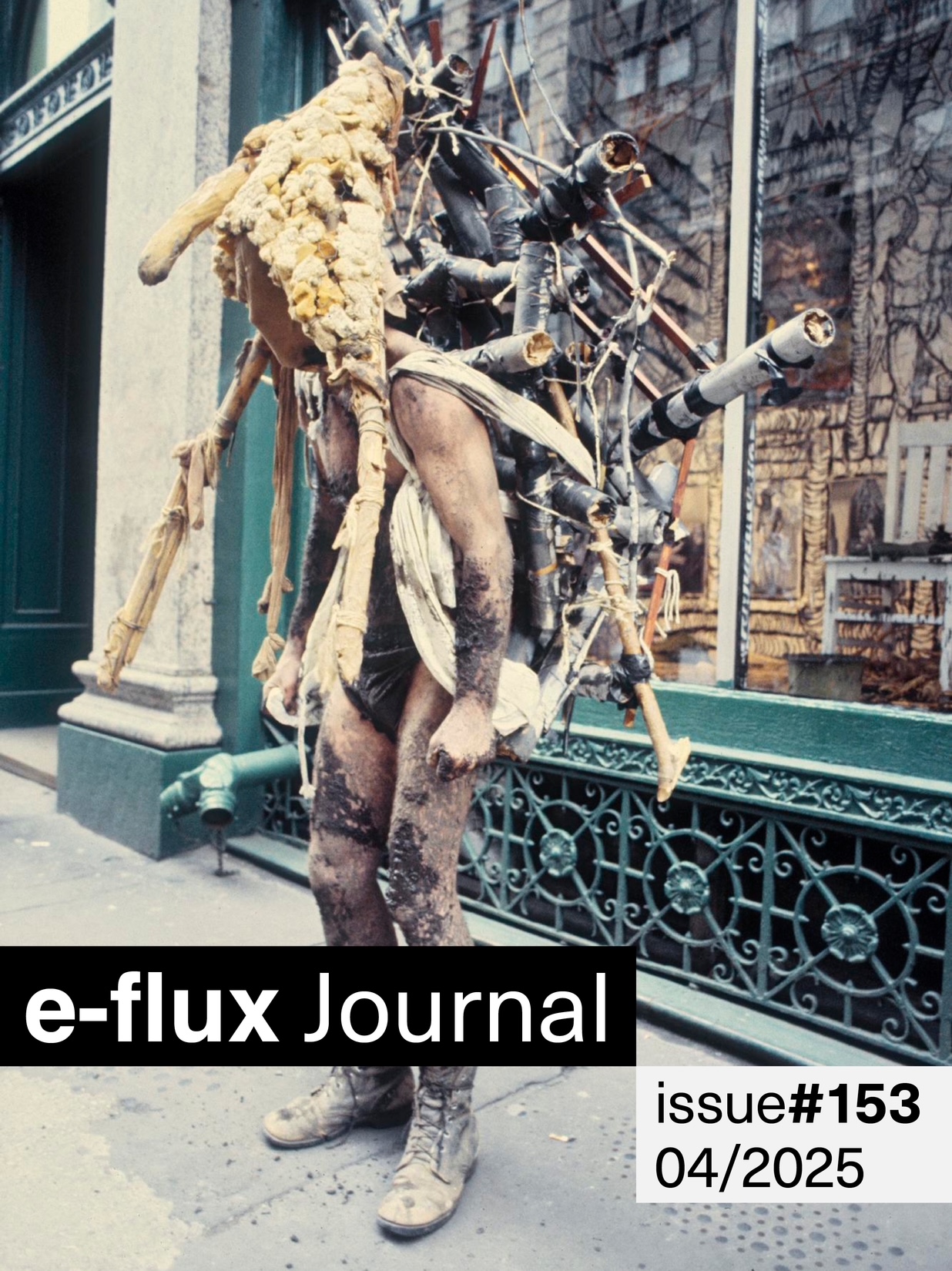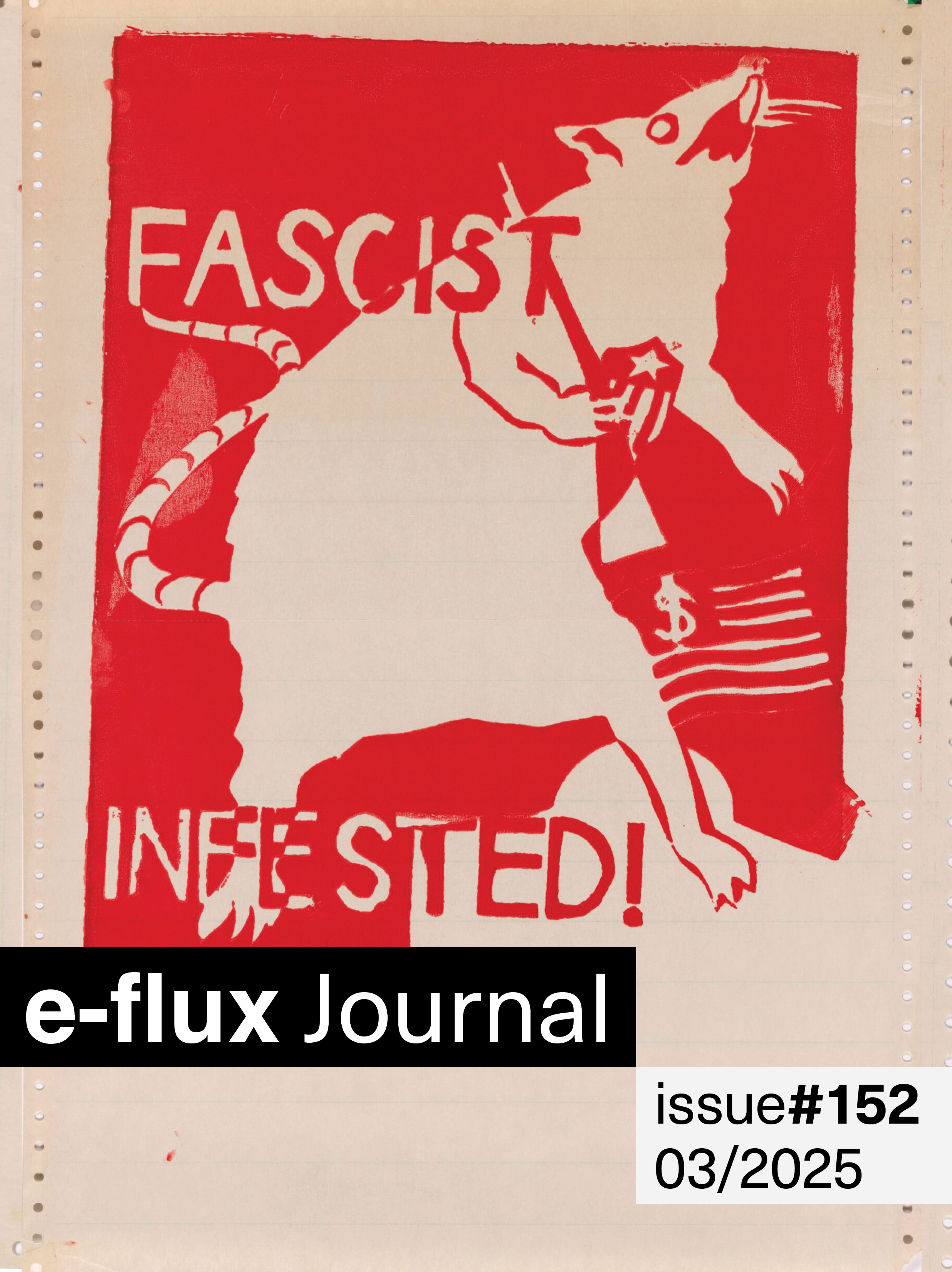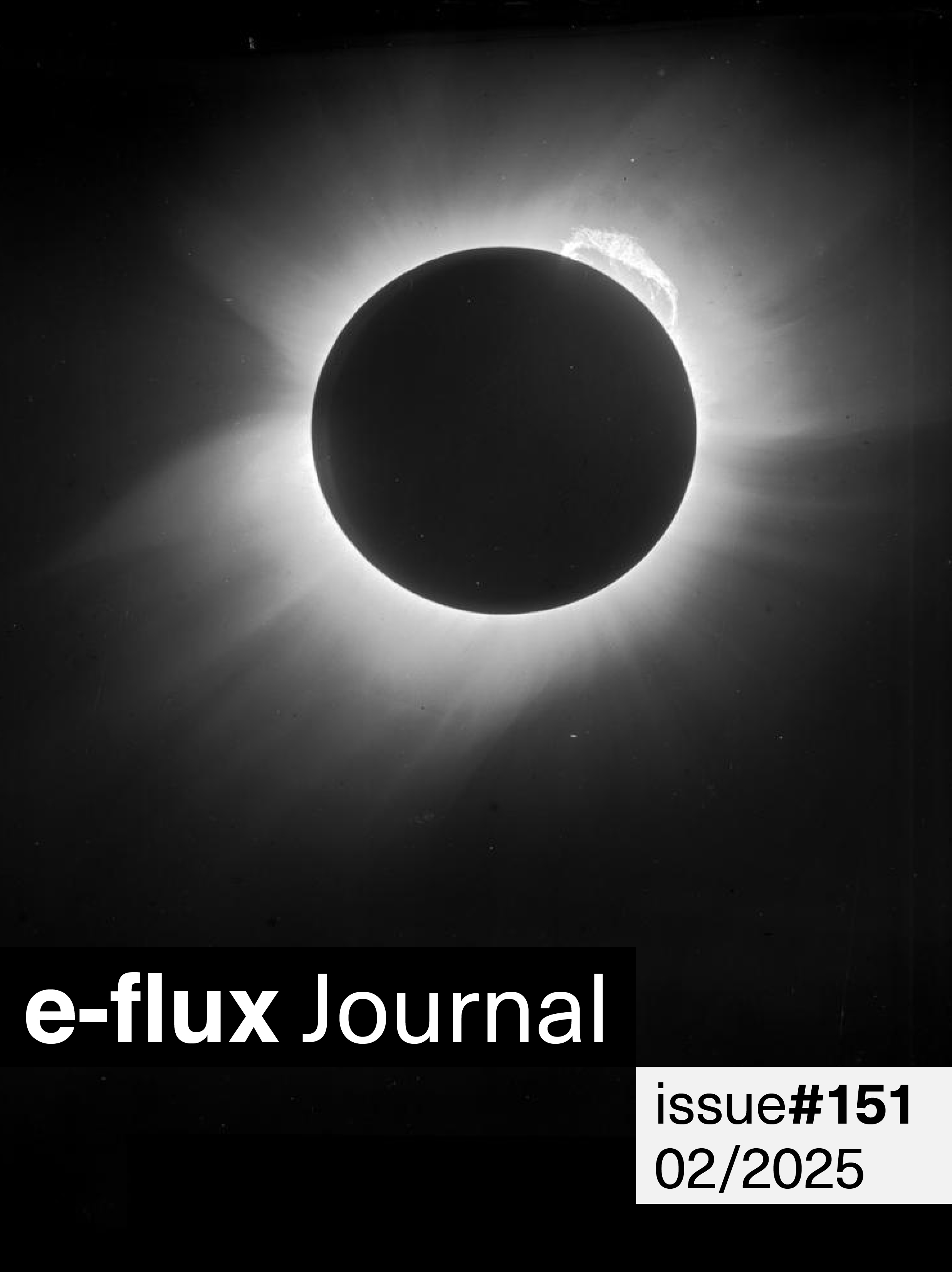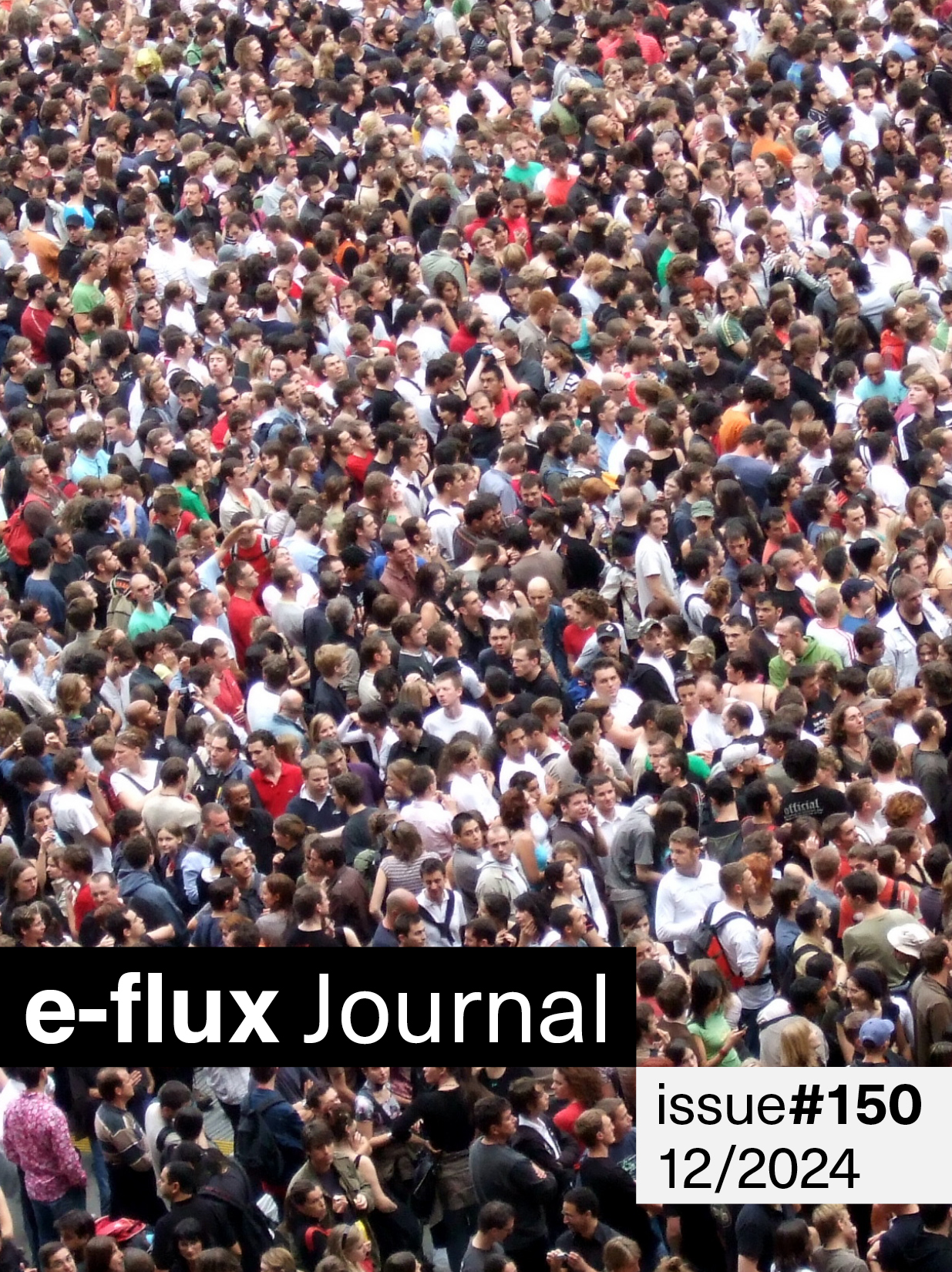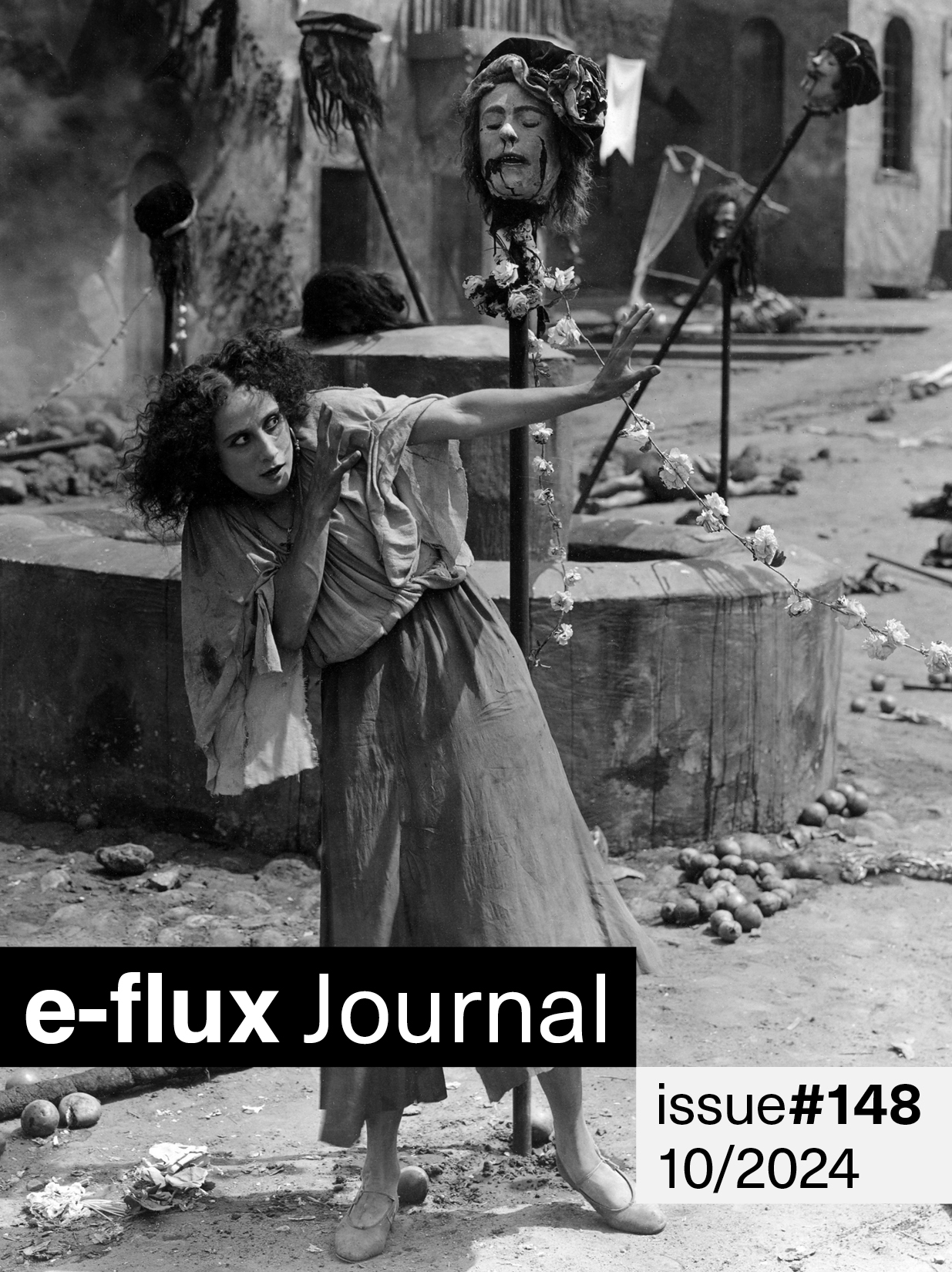Issue 145
edited by Ghoncheh Ghavami and Bahar Noorizadeh
with Nahal Nikan, Arnavaz, Negar Hatami, Elaheh, Shouka Alizadeh and Goli Baharan, Nuzhan Didartalab, Aram, Parva, and Dasgoharan
Just over a year and a half ago, Jina Mahsa Amini, a twenty-two-year old Kurdish woman from a rural province, died in a hospital in Tehran after being arrested by Iran’s morality police and severely beaten. Her death sparked some of the most encompassing protests of Iran’s recent history, with shows of support from around the world under the slogan “Woman, Life, Freedom.” This issue began a little over a year ago in early 2023 with a question about Iran’s ferociously outspoken community in the silences and intervals between uprisings, about intellectual life within and despite a clerical police state. Art and theory might seem insufficient for such conditions, yet they also carry a capacity to register and even traverse otherwise incommunicable distances—all the more important in times when contemporary art’s breezy globalism reveals its own geopolitical interests. We are extremely thankful to Ghoncheh Ghavami and Bahar Noorizadeh, the guest editors of this issue, for responding that the only way to address this question is through the perspectives of activists working within Iran. The guest editors have gone to enormous lengths to bring together a courageous issue that takes on a specific case study about their home country to insist on transnational solidarities in the hardest of circumstances.
—e-flux journal editors
This issue of e-flux journal is a collective reflection on the afterlife of the 2022 Jina uprising and the historical and material forces that compelled it. The issue’s authors are all based in Iran and are women activists and writers working across feminist, social, and civil fields. Due to security concerns and the criminalization of dissident voices within Iran, all use pen names to mask their identities. The essays include voices from ethnic and national struggle movements (in Kurdistan and Balochistan), campaigns against the death penalty and for Afghan migrant rights, and movements against the involuntary wearing of the hijab. Against the abstractions of our hyper-mediated time, their writing posits the body as a mode of inscription, as history incorporated, tracing its enforced subjections and emancipatory convulsions through the singular mutations of each body that contributed to the feminist revolution we witnessed. About twenty months since Jina’s point zero, these writings map the movement’s specificity in the genealogy of postrevolutionary insurrections in Iran.
The work of commissioning, compiling, and translating began about a year ago. At various stages, several individuals offered diligent and caring assistance, among whom are seven translators, both amateur and professional, most of whom grew up in Iran and, like the authors, were part of the young generation that participated in the 2008 Green movement. We, the editors of this issue, have accepted only symbolic payment along with a number of these translators.
Beyond the usual platitudes of “Iran in translation,” this issue is the first freshly commissioned body of work by feminists active in Iran’s political arena translated into English, which we deem crucial for working through questions of intellectual and international solidarity. Taken together, we hope these reflections reassert the links between the Jina uprising and interconnected liberation struggles beyond national configurations. But first, we must account for certain deadlocks and affordances of translation as they reflect certain deadlocks and affordances of transnationalism for political action in Iran today.
Why a translated issue on the women’s uprising in Iran now? Who is the addressee at the end of the regulated pipelines of the English language? After all, English in our ears has been reduced to the sound of liberal hegemony in genocidal times, the soporific stream of condemnations, silences, and clichés that only further dissuade any of us from holding the genocide of Palestinians in Gaza, literally, in the palm of one’s hand. It is truly harrowing to realize how all the English that leaves our mouths today amounts to further complicity, further abstraction, a point that has been best elucidated recently by Palestinian activists and writers Islam al Khatib and Mohammed El-Kurd.* Al Khatib in particular credits the current vagueness of discourse on Palestine to not only the criminalization and suppression of the Palestinian cause (further systematized by Zionist lobbies today), but also to a matter of translation. Recalling Anis Sayegh, who insisted on producing Arabic content while heading the Palestine Research Center in Beirut in the late 1960s and ’70s, al Khatib writes: “Unlike today, the focus on translation was much less about convincing and more about bridging and co-building.” In Sayegh’s time, (English) translation was strategically irrelevant because “the foreigners who mattered most were already there, fighting with Palestinians.”
In today’s Iran we cannot easily identify such foreign friends in struggle as Palestinians once did. It is not because they do not exist—recall the Afghan women in Kabul who rallied alongside Iranian women during the first months of the Jina uprising. Rather, it is due to a more severe condition of untranslatability resulting from the decades-long economic and sociocultural isolation Iranians have been subjected to. Any translation that does occur is through banalities and clichés, framing “Iran” as a case of failed or triumphant antagonism against American imperialism, but never as a player in the gamespace of global capitalism. Contemporary Iran is not allowed to be what it is: a complex arrangement of forces and counterforces resulting from the country’s modernization, its anti-colonial struggles, and the rise of political Islam. Yet how else can we possibly place the plight of women and their struggle around the mandatory hijab in a biopolitical frame that avoids both the reductivism of liberal feminism and its critics in the West?
The events that followed the Jina uprising reveal the decades-long wealth of critical activity by organized councils, coalitions, unions, and syndicates, along with the feminist, worker, teacher, student, pensioner, and ethnic-national democratic movements that have been active in the country since the 1979 revolution and before. But even more, as the essays in this issue show, the uprising laid bare everyday acts of disobedience and resistance by individuals, whether women, queer, or trans people. This is where the formula of translational solidarity shifts from the common enemy—often misunderstood—to a common struggle … [continue reading].
—Ghoncheh Ghavami and Bahar Noorizadeh
Editorial
This issue of e-flux journal is a collective reflection on the afterlife of the 2022 Jina uprising and the historical and material forces that compelled it. The issue’s authors are all based in Iran and are women activists and writers working across feminist, social, and civil fields. Due to security concerns and the criminalization of dissident voices within Iran, all use pen names to mask their identities. The essays include voices from ethnic and national struggle movements (in Kurdistan and Balochistan), campaigns against the death penalty and for Afghan migrant rights, and movements against the involuntary wearing of the hijab.
Nahal Nikan—To Summon Life in a Cemetery
Can it be said that the most efficient political regimes are those that keep the lives of their citizens as close to life and as far from death as possible? Yes. Yet the truth is that in Iran, life is not based on life itself, but on a foundation of death. What I mean is that it is not life that stewards life; rather, it is death and the afterlife that oversee life and all that it contains.
Arnavaz—When Silence is Broken and Voices Ring Out
The gap in my father’s memory of 1979 reminds me of the persistent silences in the writings of male leftist during the years after the revolution and in the decades since. With few exceptions, only leftist women have indicted left-wing parties in Iran for their refusal to oppose the mandatory hijab and for the sexism of party members. The powerful have a shorter memory and, with an easy conscience, accept their own silences.
Negar Hatami—Heads Without Headscarves
In the last three months, it has felt like a new body has been shedding its skin inside of us. I’m not talking about bravery; nor is this an attempt to describe the body as a site of resistance. My senses are receiving something from the streets that is changing how I understand my body. I have read numerous analyses and interpretations, yet it seems as though the Woman, Life, Freedom movement is a colossal flood that stretches beyond the scope of my vision, gradually eroding my capacity to articulate or grasp it with the familiar words and discourses I have known thus far.
Elaheh—Cleansing Personal Archives and the Birth of the Black Hole of Collective Memory
In the early days when the uprising was in its passionate phase (if we consider its current stage as the depressive phase), a strange thing would happen to the protestors. We devotees of the revolution were all dreaming of love and love-making. Dead or unknown lovers came to us in our dreams so we could make love to them. We would wake up in the morning, and by that night, based on our respective time zones, narratives of our dreams would surface. An analyst said to one of the dreamers: “Dreaming of love signals hope.”
Shouka Alizadeh and Goli Baharan—A Struggle for Everyone
The Jina uprising marked a significant turning point, leading to extensive transformations in Iran’s social and political landscape. Unprecedented alliances were formed as marginalized and subaltern groups united to voice their oppressions and participate in the movement, with oppressed Iranians—including women, young people, individuals with disabilities, the elderly, and members of the LGBTQ+ community—taking to the streets with an inclusive interpretation of the slogan “Woman, Life, Freedom.” Immigrants from Afghanistan, among the most marginalized groups in Iran, also joined the uprising. Their names are not only on the lists of the arrestees, but among the casualties of the uprising as well.
Nuzhan Didartalab—A Power from Within
If during the eight years of the Iran-Iraq War people fought to “defend their motherland,” and if the Green movement was about people “fighting for their right” to determine their future, the Jina uprising seems to have been a more organic and authentic space. This necessary space emerged from desire. The movement conceived of “Woman,” “Life,” and “Freedom”—its key animating ideas—in a way that was before and beyond preconceived notions.
Aram—Jina, the Moment of No Return
For Borges, Aleph is a place that contains every other place on earth, a place where “all places are—seen from every angle, each standing clear, without any confusion or blending.” An Aleph moment is transformative; it makes us different human beings. In the same vein, we can see the Jina movement as a space-time that distilled other space-times. The Jina movement contains the essences of all the previous protests. In Jina, everyone can see a reflection of the injustices they’ve suffered. Jina’s name lies at the intersection of all class, gender, ethnic, and religious discontent in Iran today.
Parva—Inflection Points of a Pluralist Feminist Revolution
In a pluralist feminist revolution, the child of the revolution is simply born. There is no need for a midwife. History has done the work. There is no power vacuum for the revolution to fill. The revolution has already found its agents along the way. The time for this revolution is not the future.
Dasgoharan—Why Is Maho Our Symbol?
This essay was written amidst the flames of anger and blood, and on trembling ground. It is not yet clear to us where the conflict between the military forces of the state/religion/tribe and the oppressed lower strata of society will lead. The outer hard shell of power does not hesitate to do everything it can to maintain the status quo and to suppress the anger of subordinate women and youth. The coming days are important. They will tell of the relentless but disorganized struggle of different assemblages of people who are socially excluded, especially women.
Translators: Golchehr Hamidi-Manesh, Golnar Narimani, Niloufar Nematollahi, Saina Salarian, Roozbeh Seyedi, ZQ. Supervising translator: Soori Parsa.
*Al Khatib, “Becoming Monsters: What Happens When the Witness Becomes the Defendant?” Verso blog, March 13, 2024; El-Kurd, “Are We Indeed All Palestinians?” Mondoweiss, March 13, 2024.
